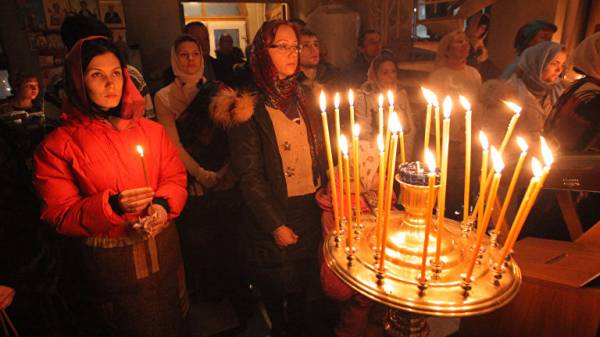Secrets of the calendars: when to celebrate Christmas
MOSCOW, 25 Dec — RIA Novosti, Alexander Filippov. Time has different aspects — historical, astronomical, theological. The latter is particularly relevant in the celebration of Christmas on December 25 and January 7.

What are the differences between the Gregorian, Julian and revised Julian calendars anything but a difference of 13 days if the connection of the calendar with the movement of the heavenly bodies, and what they say about ancient Christians and modern theologians in the material RIA Novosti.
Why the 25th
From the point of view of ancient Christians, Christmas should be celebrated in the winter solstice. “The days of the festive observe, and above all — the day of the Nativity of the Lord, making it the twenty-fifth day of the ninth month,” says a monument to the third century, “the Apostolic decree”.
Why December 25? There are at least three different explanations.
News , “Moses has left us a great mystery”. Archaeologists are rediscovering the Bible
, “Moses has left us a great mystery”. Archaeologists are rediscovering the Bible
First, Julius Caesar in 45 BC set the calendar in which the date of the winter solstice (lat. bruma — “shortest (day)”) falls on December 25. After this long day that was associated with the birth of the sun. In the Mediterranean, and even extended the celebration of the “birthday of the invincible sun”. This period was called “brumalia” and devoted to different gods. The celebration lasted for a month at night and consisted mainly of feasting, and dancing.
One of the forms of the struggle of Christianity with paganism was the practice of replacing these pagan rites to Christian. The Church decided to celebrate this day the birth of Christ. And the full name of the celebration was “birthday of the invincible Christ” or “Feast of lights”. “One theory says that the Church tried to replace the missionary way the feast of the “invincible sun,” — said Archpriest Vladimir Khulap.
However, according to another theory, the Dating of the holiday based on the biblical chronology. “She comes from dates 25 March — the Annunciation and conception of Christ, which figured nine months,” explains father Vladimir.
A third version offers the author of the book “the Christian chronological system,” is known in Orthodox circles, the historian Pavel Kuzenkov. According to him, more ancient than Christmas, is the feast of the Epiphany (Baptism), which is celebrated according to the Julian calendar January 6 (Gregorian, respectively, January 19). And it is to him we owe the reference date of Christmas to December 25.
The news Where actually baptized Jesus Christ
Where actually baptized Jesus Christ
“Originally, the Epiphany was connected with Christmas. The Armenians, for example, still celebrate the holidays together. In the IV century appeared Christmas — it is believed that substitution of the pagan celebration of the winter solstice. However, my research showed that most likely, was born December 25 from January 6 — in the case of conversion of rolling stock of the Egyptian calendar to the Julian calendar. In addition, this date agrees well with the indirect gospel reference to the time of Jesus ‘ Birth. However, the symbolism of the Nativity of Christ “the true sun of righteousness” — at the beginning of the ascending of the solar time of day was always very important. Because Christianity supplanted widespread in Rome in the solar cult. Another completely random but iconic — calendar thing was a coincidence the first day of the pagan planetary week (weeks), which was dedicated to the sun (Ms. eng. Sunday), the day of the resurrection of Christ,” Kuzenkov said.
Astronomy and three calendars
These days, however, the date of the winter solstice moved to December 21 because of the accumulating calendar error. The fact that the astronomical year is not exactly equal to 365 days, there is still a quarter of the day. By the fourth century the error in synchronization of the calendar and solar year has already reached three days, so the winter solstice had not on December 25, and 22.
News In the North of Israel found mosaic with scenes from the old Testament
In the North of Israel found mosaic with scenes from the old Testament
The divergence of the Julian calendar with astronomical year in one day accumulated over 128 years, the Gregorian — three thousand, 333 years, and the revised Julian — for 40 thousand years.
To the XVI century, a simple but imperfect system of correcting the errors of the Julian calendar accumulated a ten days gap from December 25, and from the astronomical solstice — 13 days. Following the decision of the First Ecumenical Council on the coordination of the celebration of Christmas and Easter with the astronomical year, Pope Gregory took as a basis the same Julian calendar, but complicated system of compensation of its errors and moved the calendar grid for ten days. Since then, scientists and theologians argue different whether it’s calendars or the second — is the same Julian calendar, but in a slightly complicated version, and whether there is any sense in different “styles”.